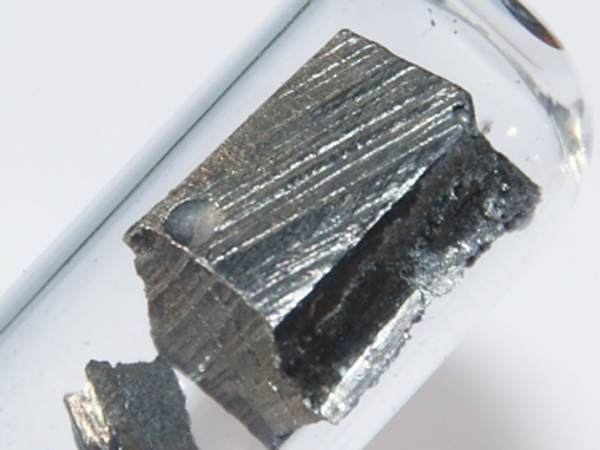Researchers at MIT say they have uncovered a potential hazard to the future of clean energy technologies: the supply of rare metals.
The technology needed to produce wind turbines and motors for electric vehicles take advantage of two rare earth elements, both of which are imported almost exclusively from China.

The research team said that an expected massive increase in the clean energy sector in the next 25 years could put pressure on the supply of such elements. They said that while there was no danger of the supply running out, over-mining could make the metals more difficult to reach and push the cost of production up to a point where it was no longer viable.
The study looked at 10 so-called rare earth metals, all of which had some uses in high-tech equipment, and in many cases in technology related to low-carbon energy.
Wind power, for example, which is one of the fastest-growing sources of emissions-free electricity, uses magnets that contain the rare earth element neodymium. The MIT team said neodymium demand could increase by as much as 700 percent in the next quarter century.
Even so, they said the earth metal with the biggest question mark hanging over its supply capabilities was dysprosium, an essential ingredient in some electric vehicles’ motors. The report’s authors said demand for dysprosium could increase by a giant 2,600 per cent over the same time.
A conventional car uses just over a pound of rare earth materials – mostly in small motors – but electric cars can use nearly 10 times as much in their lightweight batteries and motors.
A single large wind turbine, meanwhile, rated at about 3.5 megawatts will typically contain about 1,300 pounds of rare earth metals.
China is known to have about half of the known reserves of rare earth metals whilst the US also has significant deposits.
The mining of these metals had almost stopped in the US because the cost of production had made it uneconomic. However, improved mining technology has made these sources once more usable.
The report was led by a team of researchers at MIT’s Materials Systems Laboratory and included principal research scientist Randolph Kirchain. It was co-authored by three researchers from Ford Motor Company and was published in the journal Environmental Science and Technology.
“The bottom line is not that we’re going to ‘run out,’” Kirchain said in statement. “But it’s an issue on which we need focus, to build the supply base and to improve those technologies which use and reuse these materials. It needs to be a focus of research and development.”
Barbara Reck, a senior research scientist at Yale University who was not involved in this work, commented in a statement that the research offered “a vivid reminder that the current practice of not recycling any rare earths at end-of-life is unsustainable and needs to be reversed.”